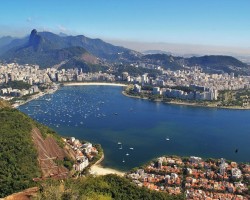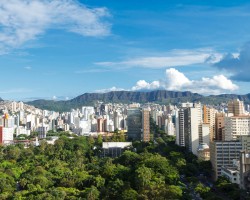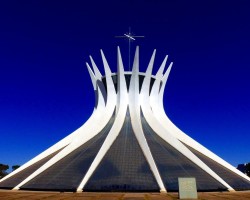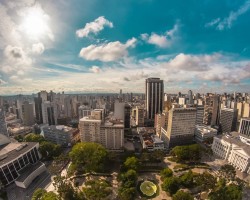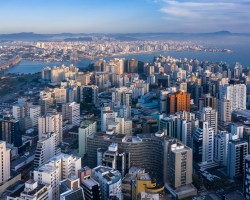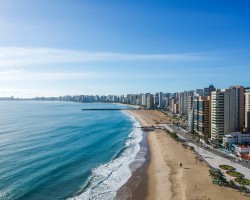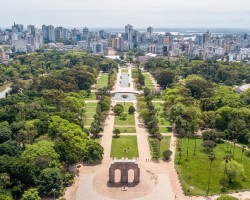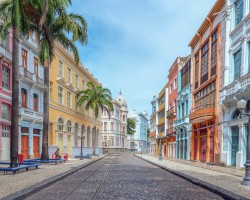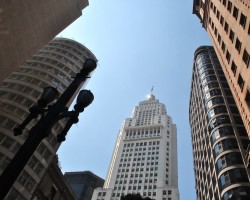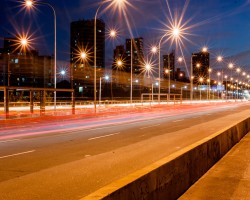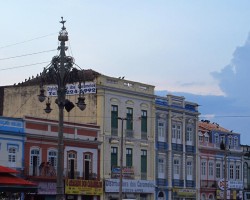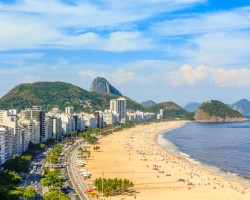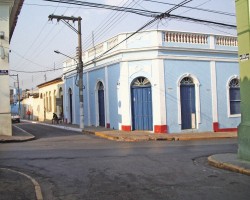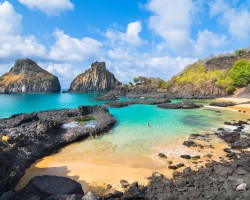Best time to go to Brazil for a perfect weather and where to go?
When is the best time to go to Brazil?
Good news: Brazil can be visited all year round! This immense country (2 and a half times the size of India!) is subject to different climates depending on the regions. Located south of the equator, the seasons are reversed compared to Europe (and the entire northern hemisphere): their winter is our summer, and vice versa!
So, when is the best time to visit Brazil? To fully enjoy your trip to Brazil while avoiding the intense heat, the ideal time to visit Brazil is during the austral winter. Between June and October, the temperatures are milder (even a bit cool at night), and rainfall is less abundant throughout the country. This dry season is also the perfect time to explore the Brazilian Amazon. Animals will be more visible, and showers will be less frequent.
If heat and humidity are not a concern for you, know that the best time to visit Iguazu Falls is during the austral summer. In December and January, their water levels reach their peak, making them even more impressive!
What is the best time to visit Brazil to experience its famous carnival? Whether it's to participate in the preparations in the numerous sambadromes or party all night long, January and February are the perfect months. During carnival, the tourist influx is at its peak, for both locals and foreigners. It is essential to book your accommodation in advance!
On the Atlantic coast, you can enjoy a succession of heavenly beaches all year round, even though showers may occur in the late afternoon in the Nordeste, especially during the austral summer.
Where and when to go based on the weather?
Central-West Region of Brazil
Brasilia, Cuiabá, Campo Grande...
North Region of Brazil
Belem, Manaus, Boa Vista...
Northeast Region of Brazil
Fortaleza, Teresina, Recife...
South Region of Brazil
Curitiba, Porto Alegre, Florianopolis (Santa Catarina Island)...
Southeast Region of Brazil
Rio de Janeiro, Belo Horizonte, Sao Paulo...
To get all the information about the climate and weather in Brazil for a specific month, click on the corresponding link below:
Brazil in january Brazil in february Brazil in march Brazil in april Brazil in may Brazil in june Brazil in july Brazil in august Brazil in september Brazil in october Brazil in november Brazil in december
Best time to travel to Brazil by cities
Climate and Weather in Brazil
Bordering Colombia, Venezuela, Peru, Bolivia, Paraguay, and even French Guiana, the country is so vast that Brazil experiences several climates.
To simplify:
- Mediterranean climate in the south of Brazil
- Equatorial climate in the north
- Tropical climate on the Atlantic coast
In general, the weather in Brazil is pleasant all year round, even though temperatures can vary greatly between the north and the south, as well as humidity levels. When packing your suitcase, forget about coats and gloves, but remember to bring your swimsuit and shorts! Regardless of the season, also consider bringing something to cover up: restaurants often blast the air conditioning, and evenings on terraces can be a bit chilly. Long cotton clothes are also practical to protect yourself from mosquitoes.

Climate in the Rio de Janeiro region
Around Rio de Janeiro, summers are often quite humid and temperatures are high. On the other hand, the water temperature is delightful! Especially since rain mostly falls in the late afternoon, especially between October and January. It is entirely possible to plan a trip during this period, especially if you want to attend the carnival. Between June and August, the austral winter is characterized by mild temperatures and low precipitation. It will offer you beautiful sunny days, even if the water is cooler.
Climate in the Nordeste
From Salvador da Bahia to São Luís, the Nordeste is the region located at the tip of Brazil and bordered by the Atlantic Ocean. Close to the Equator, it is hot all year round and humidity levels can be very high inland, especially between December and March. Along the coast, the tropical breeze soothes the feeling of humidity and clears the clouds, offering an idyllic setting for beach holidays, especially between September and November.
Climate in Mato Grosso, Mato Grosso do Sul, and the Pantanal in Brazil
During the austral summer, this region located inland is known to be one of the hottest in the country, especially around the city of Cuiaba. It is also during this period that the rainy season is in full swing: showers are daily and very abundant. Floods are quite common, so it is advisable to visit in winter or during the inter-seasons. Note that Mato Grosso do Sul can sometimes experience significant temperature drops between November and March.
Climate in the Brazilian Amazon
Known to be the wettest region on the planet, the Brazilian Amazon has an equatorial climate: it is hot and humid all year round. It is also a particularly rainy region. Between December and June, rain can fall continuously throughout the day. The rest of the time, there may be several short showers every day, without it being unpleasant. During the dry season, between July and November, temperatures can sometimes be particularly high, but it is the best time to see the animals of the forest.
Climate in southern Brazil
The climate of Brazil becomes more temperate as you go south. As soon as the Tropic of Capricorn is crossed, the country reveals four well-defined seasons, always opposite to Europe. The Atlantic coast enjoys weather similar to the Mediterranean climate, with mild winters, very hot summers, and low precipitation. Swimming, on the other hand, becomes more difficult as you go south! In the far south, towards the border with Uruguay or Argentina, winters can be harsh inland, as well as around Porto Alegre.
Climate in Minas Gerais
Located above Rio de Janeiro, this inland region does not border the ocean. For this reason, Minas Gerais has a temperate climate with even more distinct seasons than on the coast. Around the city of Belo Horizonte, the climate resembles that of the south of the country with winters where it can be very cool in the evening, very hot summers, and particularly pleasant inter-seasons. If you plan to visit this beautiful region, prefer spring and autumn.
Temperatures and rainfall in Brazil
On these 3 graphs, we present the evolution of temperatures of Brazil and month-by-month rainfall for the cities of Rio de Janeiro, Belo Horizonte, Brasilia, Curitiba and Florianopolis (Santa Catarina Island), as well as the month-by-month sea temperature for coastal cities.
Average price for flights to Brazil
A return flight between New York City and Sao Paulo is generally cheaper if you go in september ($ 782 on average): this is the best time for travellers on a tight budget. In contrast, you may end up paying $ 512 more for your airline ticket to Sao Paulo if you go in december.
Where to go in Brazil?
This table allows you to see the maximum temperature for each city and our opinion on the weather month by month (see colour legend below the table).
| Cities | jan. | feb. | mar. | apr. | may | jun. | jul. | aug. | sep. | oct. | nov. | dec. |
| Rio de Janeiro | 31°C | 31°C | 30°C | 28°C | 26°C | 26°C | 26°C | 26°C | 27°C | 27°C | 27°C | 29°C |
| Belo Horizonte | 27°C | 27°C | 27°C | 26°C | 24°C | 24°C | 24°C | 26°C | 29°C | 28°C | 26°C | 27°C |
| Brasilia | 26°C | 26°C | 26°C | 26°C | 26°C | 25°C | 26°C | 29°C | 32°C | 30°C | 27°C | 26°C |
| Curitiba | 26°C | 26°C | 25°C | 24°C | 21°C | 20°C | 20°C | 22°C | 24°C | 24°C | 25°C | 26°C |
| Florianopolis (Santa Catarina Island) | 28°C | 28°C | 27°C | 25°C | 23°C | 21°C | 20°C | 21°C | 22°C | 23°C | 25°C | 27°C |
| Fortaleza | 30°C | 31°C | 31°C | 30°C | 30°C | 30°C | 30°C | 30°C | 31°C | 31°C | 31°C | 31°C |
| Porto Alegre | 31°C | 31°C | 29°C | 27°C | 23°C | 20°C | 20°C | 22°C | 23°C | 26°C | 28°C | 31°C |
| Recife | 30°C | 31°C | 31°C | 31°C | 30°C | 29°C | 28°C | 28°C | 28°C | 29°C | 30°C | 30°C |
| Sao Paulo | 28°C | 29°C | 28°C | 26°C | 24°C | 23°C | 24°C | 25°C | 28°C | 27°C | 27°C | 28°C |
| Teresina | 33°C | 33°C | 32°C | 32°C | 32°C | 33°C | 34°C | 36°C | 38°C | 38°C | 36°C | 35°C |
| Belem | 31°C | 31°C | 30°C | 31°C | 31°C | 32°C | 33°C | 34°C | 34°C | 34°C | 34°C | 33°C |
| Boa Vista | 34°C | 35°C | 35°C | 34°C | 31°C | 30°C | 31°C | 32°C | 34°C | 35°C | 34°C | 34°C |
| Campo Grande | 30°C | 29°C | 29°C | 29°C | 27°C | 26°C | 27°C | 30°C | 33°C | 32°C | 31°C | 31°C |
| Cuiabá | 33°C | 32°C | 32°C | 32°C | 32°C | 32°C | 34°C | 37°C | 39°C | 37°C | 34°C | 33°C |
| Fernando de Noronha | 28°C | 28°C | 29°C | 29°C | 29°C | 28°C | 28°C | 27°C | 27°C | 27°C | 28°C | 28°C |
| Guarapari | 29°C | 30°C | 29°C | 28°C | 26°C | 25°C | 25°C | 25°C | 27°C | 27°C | 27°C | 29°C |
| João Pessoa | 30°C | 31°C | 31°C | 30°C | 30°C | 29°C | 28°C | 28°C | 29°C | 30°C | 30°C | 30°C |
| Manaus | 31°C | 31°C | 31°C | 30°C | 31°C | 32°C | 34°C | 36°C | 37°C | 37°C | 35°C | 33°C |
| Paraty | 28°C | 28°C | 27°C | 25°C | 24°C | 23°C | 23°C | 25°C | 27°C | 27°C | 26°C | 28°C |
| Petropolis | 31°C | 32°C | 30°C | 28°C | 27°C | 26°C | 26°C | 27°C | 29°C | 28°C | 28°C | 30°C |
Legend:
perfect weather
good weather
tolerable weather
bad weather
very bad weather
About Brazil
What can I do in Brazil?
Beaches / swimming
Nature and countryside
Culture and heritage
Sports
Family travel
Crafts / shopping
Gastronomy
Nightlife
Is this weather information for Brazil reliable?
Climate data for Brazil has been gathered every day since January 2009. The analysis of these meteorological data for Brazil allows us to determine the average for each month in Rio de Janeiro, Belo Horizonte, Brasilia, Curitiba, Florianopolis (Santa Catarina Island), Fortaleza, Porto Alegre, Recife, and 88 other cities.
So yes: this data is reliable except in cases of temporary climate disruption in the region.
